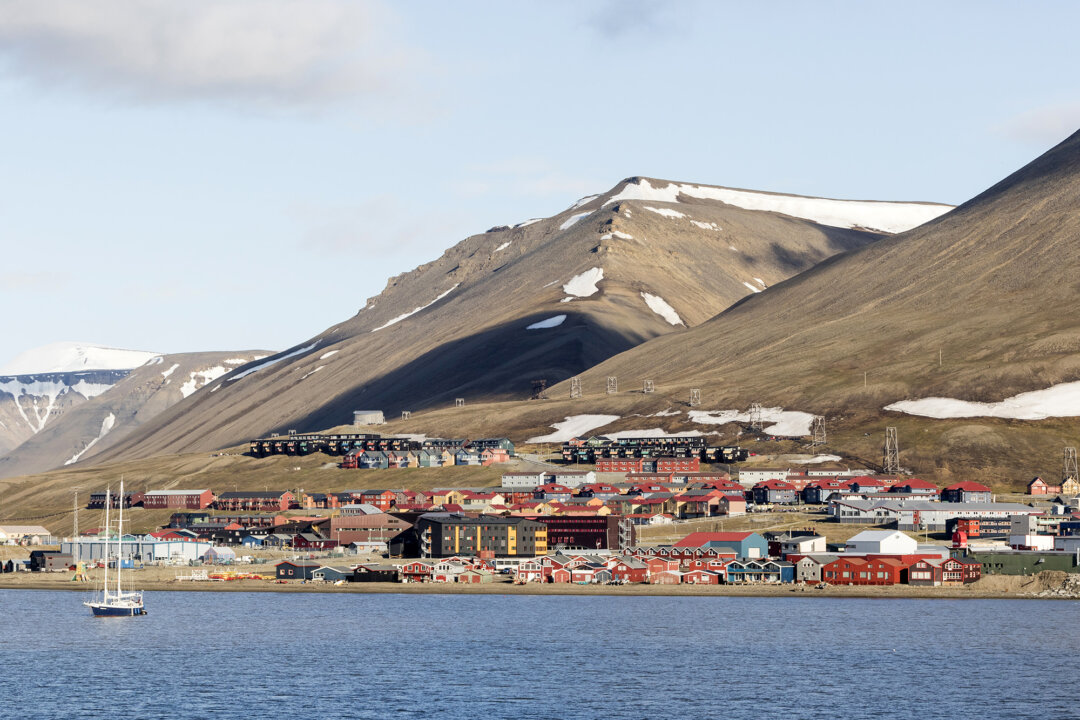


When you arrive in Longyearbyen for the very first time, you can’t quite believe your eyes. There’s no place on earth that looks anything like it. Surrounded by a vast Arctic wilderness and many unbroken stretches of preserved and protected land, the world’s northernmost town sits on a protected harbor ringed by snow-capped mountains. But when you get a little closer, things look undeniably industrial.
Disembarking from an expedition ship, I very quickly encountered the explanation for the grittiness. One of the first sights on my walking tour? A huge coal plant, complete with smokestacks and shafts leading off to various places. “For centuries here,” the guide explained, “it’s always been coal.”

While production is way down from its peak, signs of this legacy are everywhere, including a now-disused cable car system that once ferried coal down to ships on the water. But here’s the thing about Svalbard: Despite a hardscrabble history, big-time beauty is around every corner.
Proceeding up a hill away from the water, a group of reindeer peered down on us, like they’ve been plucked from Santa’s workshop and dropped right there. A rather unbelievable encounter in many places, maybe. But just another day here on Spitsbergen.
Finding Svalbard
Set at 78 degrees north, Longyearbyen, the capital of Svalbard, is roughly halfway between the Arctic Circle and the North Pole, each about 800 miles away. That makes it the northernmost community, with a population of around 1,700.Svalbard is an archipelago of nine main islands. Spitsbergen is the largest, and home to the two largest communities: Longyearbyen and Barentsburg, the latter a town of about 450 that was long run by the Soviet Union. Its core remains a Russian state-owned company. Some expedition ships stop here to see the bust of Lenin and walk around town, although mine didn’t.
Premium Picks

Due to its extreme location, Svalbard wasn’t on the map until quite late in the course of human history. While some assert the Norse came here earlier, most agree that Dutch explorer Willem Barentsz (or William Barents) discovered these rocky, glacier-covered islands in 1596.
He was seeking the legendary Northeast Passage to Asia. But his voyage didn’t end well; on the return journey, his ship became locked in the ice. Trapped, Barentz’s crew were repeatedly attacked by polar bears and beset by scurvy. Barentsz perished at sea in 1597.
The Wild West of the Far North
Over the next few hundred years, Svalbard remained a sort of Wild West of the Far North, with the brave and sometimes desperate facing isolation and difficult conditions. Today, it’s a popular destination for upscale expedition ships, with guests on the decks capturing wildlife and wild beauty on their long-lens cameras. But this archipelago’s history was undeniably forged in grit, blood, and sweat.First, people voyaged to this remote place for the whales. In centuries past, whale oil was an extremely valuable commodity, lighting lamps and illuminating homes and businesses all around the world. But as these beautiful, intelligent creatures became scarce in closer waters, whalers from England, the Netherlands, and other countries were forced to hunt further afield. They set up stations on Svalbard starting in the 17th century.



Next, people came to mine the coal. In the heart of Longyearbyen, the Svalbard Museum—part of the University Centre—is full of useful information. You can spend the whole day here. Among many other things, the displays detail the progression of the coal industry and how it shaped politics and sovereignty here.
Several powerful nations had interests in Svalbard. But it was an American, John Munro Longyear, who had the greatest success when he started his Arctic Coal Company in 1906. (The town now bears his name.) Still, the museum notes, the challenges were formidable. Chief among them: “Svalbard, a no-man’s land, had no laws … mining communities without a police force could do little to subdue troublemakers and hooligans.”
A Land of Its Own
Joint rule by a number of countries was a popular option for a while. But the Svalbard Treaty of 1920 gave sovereignty of the archipelago to small, neutral Norway. Today, the archipelago is in a truly unique political situation. While part of the Kingdom of Norway, Svalbard operates somewhat autonomously.


Taxes are much lower than on the mainland. Liquor is rationed. The government doesn’t require visas for those who want to work and live here. It’s a true frontier mentality—if you’re able to support yourself, come here and give it your very best. That isn’t easy, with many months of complete darkness in the winter and temperatures that can rarely be described as “balmy.”
Which, of course, makes Longyearbyen a fascinating place. More than 50 nationalities make up the small population. Walking down the street, you might pass an adventure guide from Spain, a miner from Sweden, and a whole bunch of parka-clad American and British passengers off an expedition ship.
The abiding axiom is that you can’t be born here or die here. The former because of the somewhat limited medical facilities. The latter because it’s impossible to bury a body into permafrost, ice just below the surface that never melts, making decomposition impossible.
The tour took me to a “seaman’s church,” with a large lounge for people to drink coffee and socialize. Then, I descended down into the town center. Dark ridges rise on each side, some buttressed with avalanche fences. The heart of Longyearbyen is actually quite attractive, in that rugged, northern way, the main street lined with well-maintained, multi-colored buildings.


I toured through the gleaming, well-stocked supermarket, visited the big, stuffed polar bear in a hotel lobby, and had lunch in a comfortable restaurant. (Nothing exotic—just a burger and fries.) After a visit to the museum, it was back to the ship.
The wilderness awaited. Whales and seals and even walruses. Plus, of course, so many polar bears. Some of them were wandering around just outside of this truly unique and captivating town.




